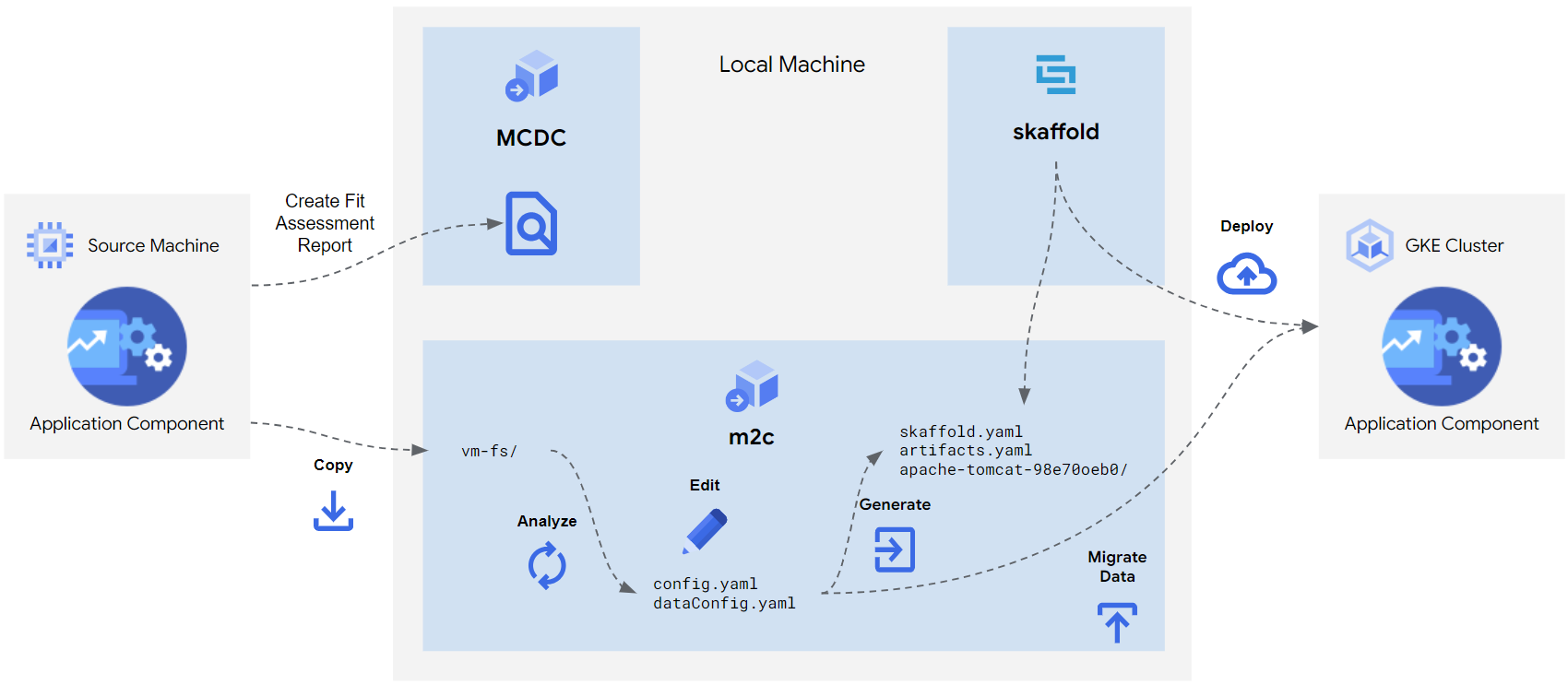Migrate to Containers CLI 架构
本页面简要介绍了 Migrate to Containers CLI 如何将驻留在虚拟机 (VM) 实例上的应用转换为工件,供您用于将应用组件从来源环境部署到 Google Kubernetes Engine (GKE) 或 GKE Enterprise 上的目标集群。
Migrate to Containers CLI 组件
使用 Migrate to Containers CLI 进行现代化改造需要完成三个步骤:转换、工作负载部署和维护。

转换 - Migrate to Containers CLI 用于将基于虚拟机的应用组件转换为可部署的基于容器的应用组件。这包括五个阶段:
- 复制 - 将目标机器的文件系统复制到本地机器。
- 分析 - 分析文件系统以创建迁移计划。
- 修改 - 修改迁移计划以修改迁移输出,以满足您的需求。
- 生成 - 生成 Docker 文件、Docker 上下文、Kubernetes 部署文件和 Skaffold 配置等工件。
- 迁移数据 - 将数据文件复制到永久性卷中。这是可选操作。
工作负载部署 - 您可以在满足最低要求的 GKE 或 GKE Enterprise 集群上部署迁移的容器工作负载。迁移工件可以包括一个或多个 Dockerfile、一个或多个 Kubernetes 部署规范以及 Skaffold 配置文件。
维护 - 迁移容器工作负载后,您通常会执行优化和维护操作。提取的工作负载内容和生成的 Dockerfile 可以集成到 CI/CD 流水线中,以便实现基于映像的高效维护。
后续步骤
- 了解如何查看兼容的操作系统、工作负载和 Kubernetes 版本。
- 了解如何发现、收集和评估 VMware 虚拟机以进行迁移。
- 了解如何迁移虚拟机。
